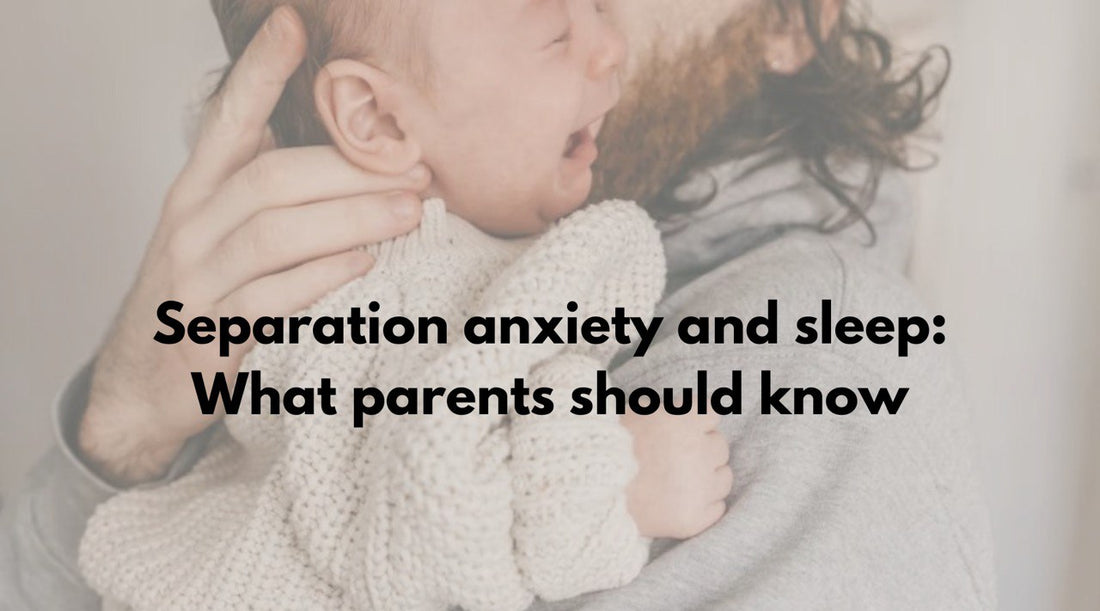
Separation anxiety and sleep: What parents should know
Share
Is your baby suddenly fearful of new faces or crying whenever you leave the room—especially at nap or bedtime? These are classic signs of separation anxiety, a normal stage of emotional development that often affects sleep.
What is separation anxiety?
Separation anxiety in babies begins when they start to grasp that they and their caregivers are separate individuals. This realization often happens around the time they begin crawling or walking—when they can physically move away from you and then notice you’re not always by their side. While exciting for development, this awareness can create anxiety and, for many families, new sleep challenges.
Connection to sleep regressions
Separation anxiety can temporarily disrupt sleep, and those changes may look like a sleep regression:
Trouble settling at bedtime
Increased night waking
Early morning rising
Shortened or skipped naps
It’s not strictly one or the other—separation anxiety can actually trigger or overlap with a regression. These disruptions may last a week or two if you keep routines steady, though they can continue if new sleep habits take hold.
When it typically appears
Separation anxiety often emerges around 8 months, when babies first explore their surroundings and become more aware of strangers and unfamiliar places. It generally eases after about 18 months as children understand that caregivers return even when out of sight.
Many toddlers experience a second wave between ages 2 and 3, showing extra clinginess or difficulty separating at bedtime even if they were previously sleeping well. Most children outgrow this phase by about age 3, but the timing varies for every child.
Why nighttime is especially hard
Bedtime represents a long stretch of separation. It’s common for babies or toddlers to cry, resist bedtime, or wake more often when separation anxiety is at its peak.
Separation anxiety vs. sleep regression
Both can cause sudden sleep struggles, but their roots differ:
Sleep regression: a developmental shift or change in routine that suddenly disrupts sleep.
Separation anxiety: distress triggered by fear of being apart from a caregiver.
The two often overlap—separation anxiety can spark a regression, and a regression may heighten anxiety.
Helping your child through nighttime separation anxiety
Maintain routines with added comfort. Stick to a familiar bedtime routine while offering extra snuggles or reassurance. Consistency helps children feel secure.
Introduce a comfort object. Once your child is old enough (typically after the first year), a favorite soft toy or blanket can provide reassurance when you’re not nearby.
Respond calmly to night wakings. Offer gentle comfort—soft words, a brief pat—while keeping the bedtime routine intact. Avoid introducing habits you don’t want to continue long-term, like rocking back to sleep every time.
Create special one-on-one time during the day. Even 10–15 minutes of focused attention can help your child feel connected and more confident when it’s time to separate for sleep.
When to seek advice
If intense separation anxiety continues well past the toddler years, or if you’re concerned about your child’s sleep, mood, or development, speak with your pediatrician. Persistent or severe anxiety may require professional guidance.
Key takeaway
Separation anxiety is a healthy sign of growing awareness but can temporarily disrupt sleep. By offering reassurance, keeping routines steady, and encouraging gentle independence, you can help your child feel secure and gradually return to more settled nights.
